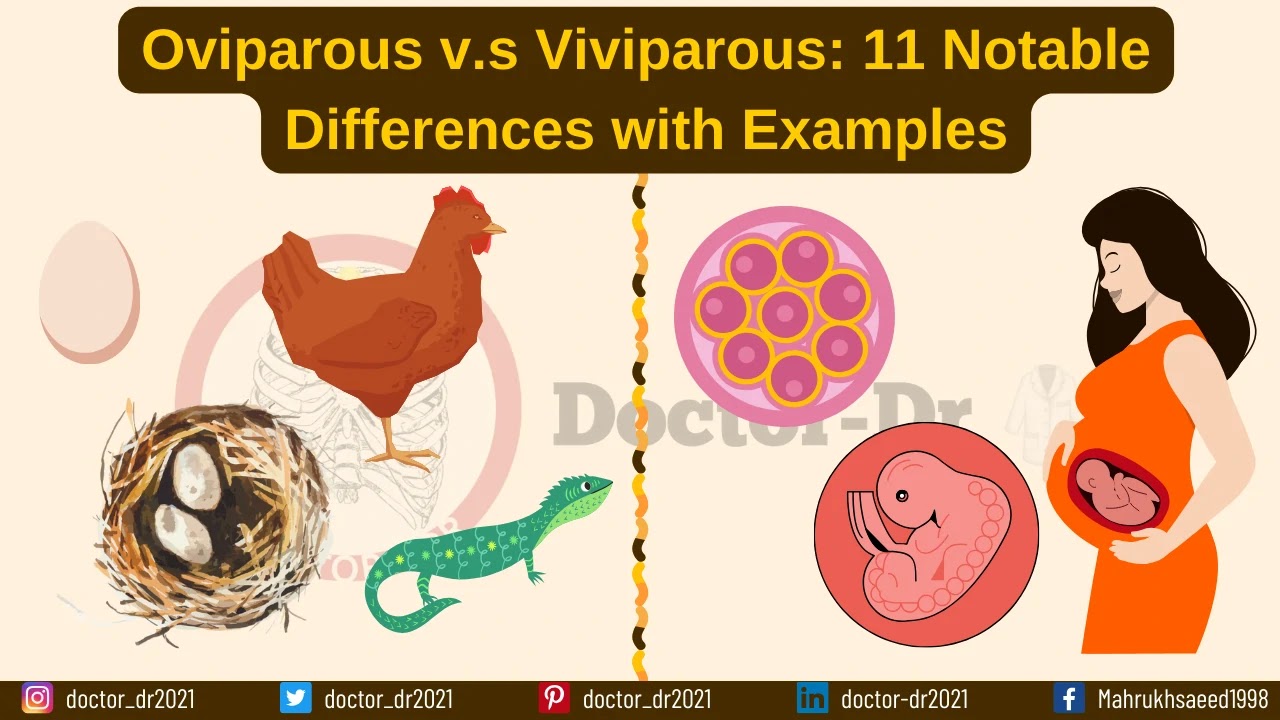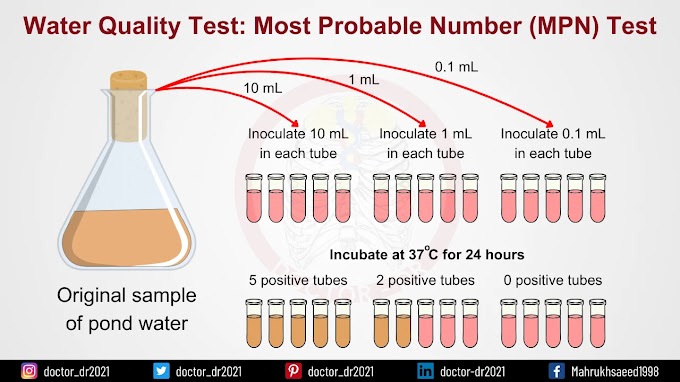Table of Contents
- Oviparous definition
- Viviparous definition
- Key Differences (Oviparous vs Viviparous)
- Examples of oviparous animals
- Examples of viviparous
Oviparous definition
Oviparous animals are those that produce eggs, from which young offspring hatch after being expelled from the female's body. Oviparity defines these animals, where fertilization can occur either externally or internally, but the offspring always emerge from the eggs outside the female's body.
- Oviparous creatures encompass a wide range of species, including most fishes, amphibians, reptiles, and even birds. Invertebrates like insects also exhibit oviparous reproduction.
- Another reproductive category known as ovoviviparous involves eggs hatching within the body of the animals, with the young subsequently being born. This phenomenon is commonly observed in certain species of snakes, sharks, and other animals.
- Oviparity has evolved as a reproductive strategy in many animals. Some species produce numerous small and delicate eggs, while others produce fewer but larger and more robust eggs. This diversity in egg production enhances the chances of survival and serves as a strategy for reproductive fitness.
- The reproductive processes of oviparous animals vary. For example, frogs engage in external fertilization, where females lay eggs that are subsequently fertilized by male sperm. The fertilized egg then develops until it hatches into a tadpole.
- Conversely, animals like hens undergo internal fertilization, with males inseminating females. Subsequently, females lay and care for the fertilized eggs until they hatch into chicks.
- Eggs produced by oviparous animals can have hard or soft shells, which vary depending on the species. The size of the eggs is also a characteristic feature unique to each animal.
- After laying eggs, some species incubate them by sitting on them to maintain warmth, while others bury the eggs in sand or soil. In reptiles, the incubation temperature plays a critical role in determining the sex of the offspring.
- Oviparous animals typically time their egg production based on the availability of food, as they provide nutrients to the developing embryo through the yolk sac. Chickens, for example, lay eggs that may or may not be fertilized. Unfertilized eggs are collected by humans as a source of nutrition.
- Examples of oviparous animals include frogs, snakes, lizards, hens, ducks, fish, sharks, penguins, butterflies, octopuses, and many others.
Viviparous definition
- This development takes place within specialized organs within the female's body, where the mother supplies essential nutrients to the developing embryo.
- Viviparous animals span across all groups of vertebrates except for birds. Fish, amphibians, reptiles, and mammals all comprise members that exhibit viviparity, despite none of these groups being exclusively viviparous.
- It is hypothesized that viviparity evolved from oviparity, where the egg remained inside the female for an extended period, leading to its eventual hatching as a live young one.
- Nutritional mechanisms vary among different viviparous animals. In some primitive species, a yolk sac provides nutrients to the embryo, while in others, the embryo undergoes development into larvae within the mother's body, nourished by secretions from her reproductive organs. In mammals, mothers supply nutrients to their newborns through mammary gland secretions.
- Viviparous reproduction involves internal fertilization, as the embryo develops inside the mother's body. Viviparous animals possess an advanced ability to transport developing young ones with the mother, which is advantageous in regions teeming with predators. Additionally, viviparous species can reproduce at any time of the year, utilizing fat reserves within the body to sustain the developing embryo.
- However, viviparity can be taxing for the mother, potentially resulting in significant damage to her reproductive organs during the birthing process. Parental care following birth varies among viviparous animals, with some mammals, such as humans, providing extensive care for their offspring, while certain salamanders exhibit no parental involvement.
- In some instances, complications during childbirth can pose risks to the mother's life. Examples of viviparous animals encompass humans, bears, giraffes, cattle, certain shark species, salamanders, and specific frog species, among others.
Distinguishing Oviparous from Viviparous Animals: 12 Key Contrasts
|
Basis
for Comparison |
Oviparous |
Viviparous |
|
Definition |
Oviparous
animals produce eggs that hatch to form young ones after being expelled from
the female's body. |
Viviparous
animals develop embryos inside the female's body, resulting in live births. |
|
Mode
of reproduction |
Oviparous
animals lay eggs that later hatch. |
Viviparous
animals give direct birth to live young. |
|
Fertilization |
Oviparous
animals may undergo internal or external fertilization. |
Viviparous
animals exclusively reproduce via internal fertilization. |
|
Development
of zygote |
Zygote
development occurs outside the mother's body. |
Zygote
development takes place within the mother's body. |
|
Nutrients |
Embryos
receive nutrients via the egg yolk. |
Embryos
obtain nutrients from the mother through the placenta or similar structures. |
|
Chance
of survival |
Young
ones have a relatively lower chance of survival as eggs are exposed to
various risks in the environment. |
Young
ones have a comparatively higher chance of survival as they are protected
within the mother's body with a steady supply of nutrients. |
|
Hard
covering |
Oviparous
animals' eggs are covered with hard shells for protection. |
Viviparous
embryos are not enclosed in a hard covering. |
|
Danger
to the mother |
Mothers
face no direct risk due to the absence of childbirth. |
Mothers
might be at risk during childbirth. |
|
Reproduction |
Oviparous
animals typically reproduce when there is ample food available for the
developing embryo. |
Viviparous
animals can reproduce throughout the year, relying on stored fat reserves for
nourishment. |
|
Parental
care |
Oviparous
animals care for their eggs after laying them. |
Some
viviparous animals exhibit parental care post-birth, while others do not. |
|
Examples |
Examples
of oviparous animals include frogs, snakes, lizards, hens, ducks, fishes,
sharks, penguins, butterflies, octopuses, etc. |
Examples of viviparous animals encompass humans, bears, giraffes, cattle, certain shark species, salamanders, specific frog species, and more. |
Examples of Oviparous Animals
Birds
- Birds are exclusively oviparous animals, with all species reproducing by laying eggs.
- The chicken is one of the most iconic oviparous animals, known for laying hard-shelled eggs that contain developing embryos.
- Most birds engage in internal fertilization, resulting in the laying of fertilized eggs that eventually hatch into offspring. However, some birds may also lay unfertilized eggs.
- Birds typically deposit their eggs in nests and provide care for them until they hatch. Certain birds, such as hens and ducks, may even incubate the eggs by sitting on them to maintain warmth.
- Many young birds are precocial, meaning they are born with the ability to walk and feed shortly after hatching.
- Nevertheless, some bird species continue to care for their offspring after hatching, offering nourishment and protection.
Reptiles
- Reptiles share a similar reproductive method with birds.
- Reptilian eggs, however, have soft, often leathery shells. These shells are typically thin and may exhibit various colors.
- Fertilization in reptiles can occur internally or externally, depending on the species.
- Reptiles typically lay their eggs on land, often burying them in sand to regulate temperature and provide warmth.
- In the case of reptiles, the temperature during embryo development plays a crucial role in determining the sex of the offspring. Hence, many reptiles work to maintain a stable temperature for extended periods.
- The size, texture, and color of reptile eggs vary among species.
- After hatching, many reptiles exhibit parental care by instructing their young on foraging and self-protection.
Examples of Viviparous Animals
Humans
- Humans are prime examples of viviparous animals, exclusively reproducing through internal fertilization, as is the case with all mammals.
- Fertilization occurs within the fallopian tube, after which the zygote travels to the uterus for implantation.
- The uterus is connected to the mother via the placenta, which supplies essential nutrients to the developing fetus.
- Unlike some other viviparous animals, human newborns are fully developed at birth.
- Following birth, mothers provide nourishment through mammary gland secretions.
High-Evolution Sharks
- High-evolution sharks, unlike other fish, are viviparous animals.
- Various shark species employ different reproductive mechanisms, some of which resemble mammalian reproduction.
- For instance, the Great White Shark exhibits a unique tissue extension from the female's oviducts, connecting to the gills of the developing shark. This structure serves a similar function to a mammal's placenta.
- Some of these tissues may even secrete a milky substance that facilitates the exchange of oxygen and nutrients with the developing embryo.
- Once adequately developed within the mother, baby sharks exit through the cloaca. After birth, sharks typically display minimal parental care, as newborns are sufficiently developed to begin hunting for prey.


.webp)



